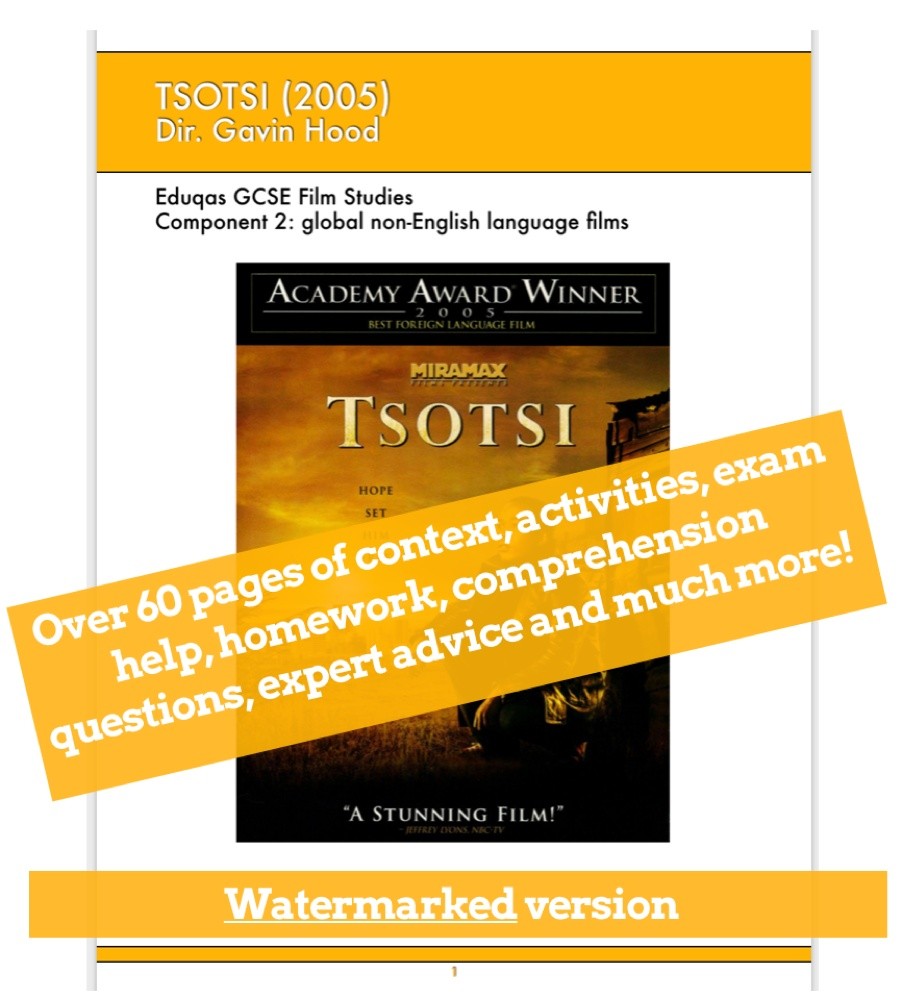Tsotsi Questions
admin 8/3/2022
Tsotsi first-handedly notices the connection between Miriam and baby David, provoking an epiphanic moment in his mind. Miriam's mothering qualities have significant implications on Tsotsi's mentality and we can gather this through (include supporting quote). Last year's Oscar winner for Best Foreign Film, TSOTSI is a brutal, affecting film about a young man's turn from violence to almost incomprehensible generosity. Gavin Hood's film takes place in a harsh, amorphous now - the presence of AIDS marks a change from the film's source, Athol Fugard's novel, which was set in the 1950s (published in 1980).


Tsotsi Chapter 2 Questions And Answers
Level 2 English: Visual Text essay for Tsotsi Describe important visual or aural symbol(s) in a visual text you have studied and analyse how the symbol(s) helped develop ideas in the text.In the film Tsotsi directed by Gavin Hood there were many important symbols. The film is about a young man, Tsotsi (a nickname which means thug) who lives a life of crime in Johannesburg, South Africa. The film is set in post-apartheid South Africa and shows a few days which change the life of the main character. The film helps us to understand the struggles that blacks face today years after their mistreatment under apartheid. Symbols such as dice, light and journeys are used in this film to develop the ideas of luck and chance, hope and the…show more content…
The physical journeys Tsotsi makes in the film develop the idea of an internal , symbolic journey. We are shown many long shots of Tsotsi walking alone or running. The shot of him walking on the train tracks at night, with slow haunting instrumental music is used several times to symbolise his inner journey. Tsotsi seems to be considering what he has done. Slowly we see him change from a violent, angry young man who only thinks of himself to a man who begins to have empathy for others. His love for the baby and realisation of the pain his parents must feel at their loss leads him to decide to return it. His final physical journey is through his township, the wasteland, the train station and finally out to the wealthy suburbs to give the child back. It is reversal of his original journey to steal the car. In giving away something that has become precious to him, he gains his soul. The audience also makes the journey with Tsotsi. At the beginning we see him as a cold, hard criminal and feel horrified by his actions. However as the film progresses, the director makes him more likeable by introducing some comic scenes and using flashbacks so we understand his difficult childhood and we begin to sympathise with him. By the end he has become a decent human being.In addition to all the visual symbols, aural symbols such as aggressive Kwaito (gangsta
The physical journeys Tsotsi makes in the film develop the idea of an internal , symbolic journey. We are shown many long shots of Tsotsi walking alone or running. The shot of him walking on the train tracks at night, with slow haunting instrumental music is used several times to symbolise his inner journey. Tsotsi seems to be considering what he has done. Slowly we see him change from a violent, angry young man who only thinks of himself to a man who begins to have empathy for others. His love for the baby and realisation of the pain his parents must feel at their loss leads him to decide to return it. His final physical journey is through his township, the wasteland, the train station and finally out to the wealthy suburbs to give the child back. It is reversal of his original journey to steal the car. In giving away something that has become precious to him, he gains his soul. The audience also makes the journey with Tsotsi. At the beginning we see him as a cold, hard criminal and feel horrified by his actions. However as the film progresses, the director makes him more likeable by introducing some comic scenes and using flashbacks so we understand his difficult childhood and we begin to sympathise with him. By the end he has become a decent human being.In addition to all the visual symbols, aural symbols such as aggressive Kwaito (gangsta